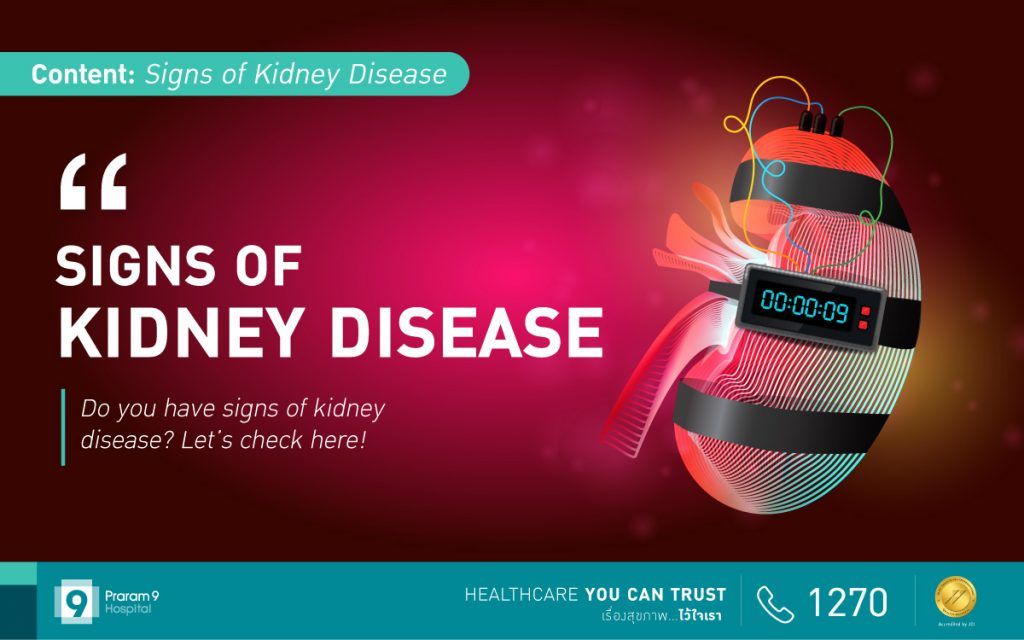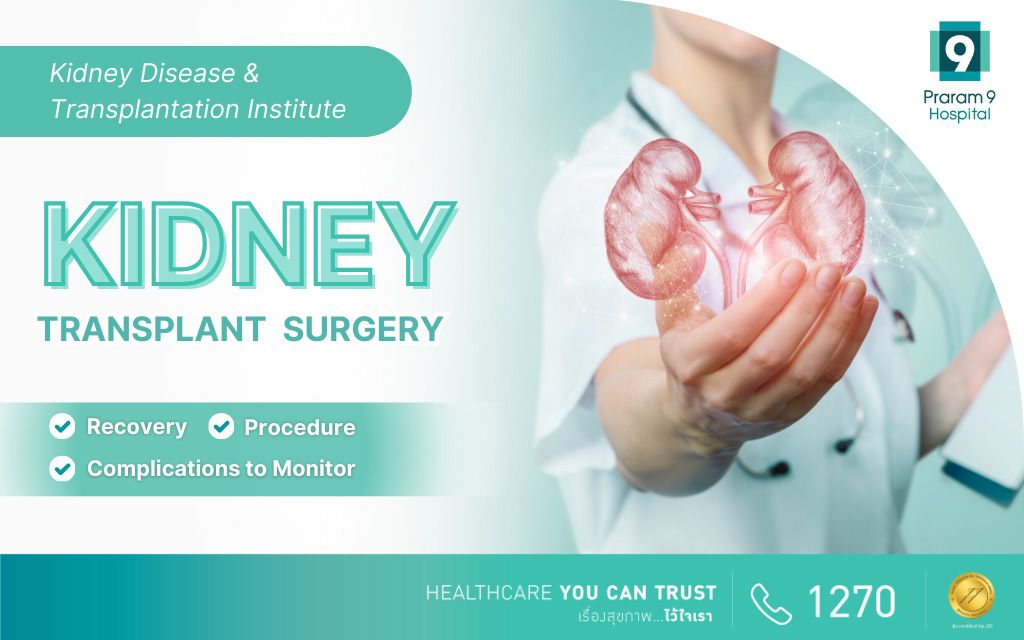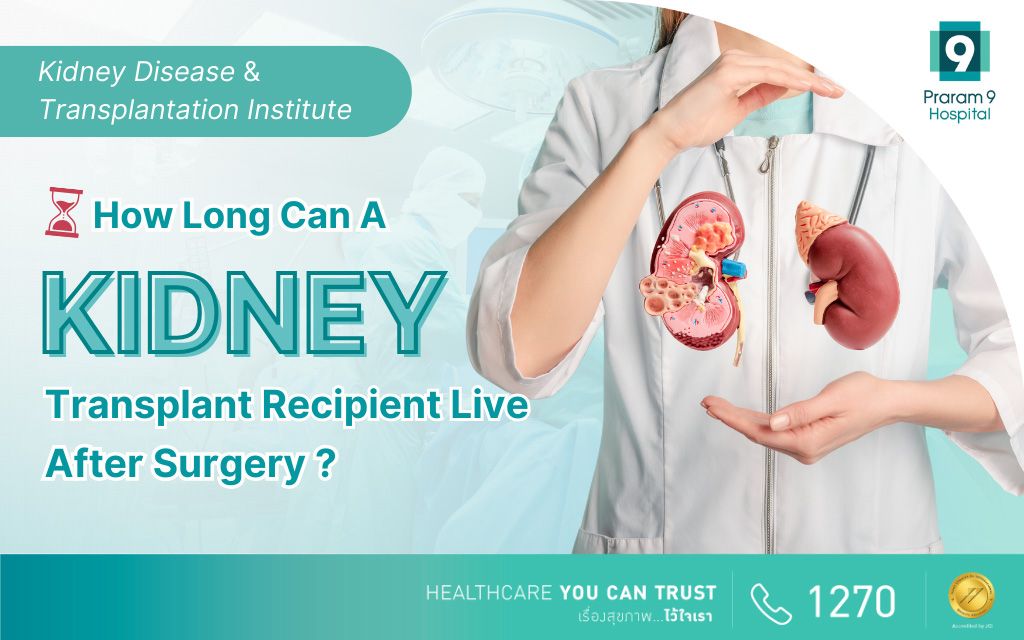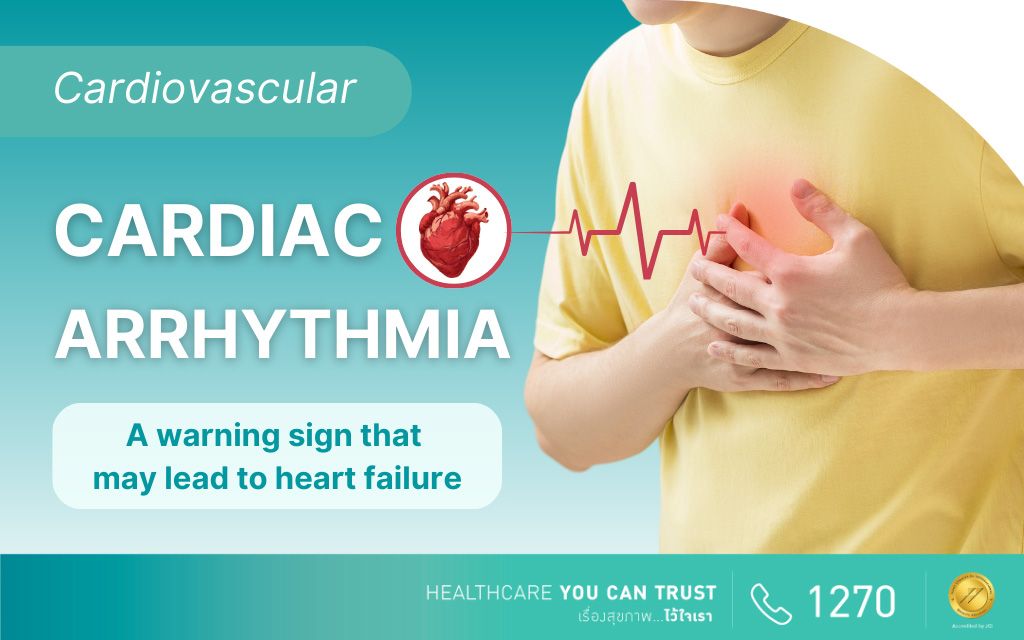Health Articles
Knowledge
Symptoms of kidney disease
NORTH TECHAWATHANAWANNA,M.D., VIROON MAVICHAK,M.D.

Due to the fact that kidney disease has multiple types, the symptoms of patients can vary. Kidney diseases can also be further classified based on the characteristics of symptoms and the affected areas, such as glomerulonephritis, chronic kidney disease, acute kidney injury, interstitial nephritis, and kidney stones, among others.
However, when talking about kidney disease symptoms, there are two main types that are most commonly encountered: acute kidney injury and chronic kidney disease. In particular, chronic kidney disease is considered a silent killer in the medical field because it often does not show symptoms in the early stages but starts exhibiting symptoms when the kidneys have been significantly damaged.
Table of Contents
- Introduction to Common Kidney Disease Symptoms
- Kidney Disease Symptoms and Their Impact on Various Body Systems
- Diagnosis: Understanding Kidney Disease Symptoms
- Conclusion
Introduction to Common Kidney Disease Symptoms
Due to the fact that kidney disease has multiple types, the symptoms of kidney disease can vary among individuals. In this article, we will discuss the two most commonly encountered groups of symptoms, namely acute kidney injury and chronic kidney disease.
Acute kidney injury refers to the rapid loss of kidney function within hours, days, or weeks. It can occur due to various causes, such as severe dehydration or blood loss, severe bloodstream infections, or exposure to toxins or side effects of medications. Patients will experience symptoms from the early stages, even when the kidneys are not yet significantly impaired. These symptoms include swelling, pale urine with traces of blood, the presence of red blood cells and white egg proteins in the urine upon urinalysis, and abnormal high blood pressure measurements. These abnormalities can be observed from the early stages of acute kidney injury, even before kidney damage occurs. Acute kidney injury is a life-threatening condition, but if promptly diagnosed and treated by a healthcare professional, kidney tissue and function can potentially recover and return to normal.
Chronic kidney disease is a progressive destruction of kidney tissue over a period of months to years. It occurs as a complication of other diseases such as diabetes-related kidney disease, kidney disease related to high blood pressure, kidney disease related to gout, and so on. In the early stages, patients may not show any noticeable abnormal symptoms and can live their lives normally for many years. During this time, if the patient undergoes a physical examination, the doctor may not find any abnormalities, except when urinalysis reveals the presence of red blood cells and white egg proteins in the urine. Eventually, when kidney function remains only at 25% or one-fourth of normal, some symptoms of kidney disease may start to appear. And if kidney function declines to less than 10% of normal, patients will have clear symptoms of kidney disease in every case.
Kidney Disease Symptoms and Their Impact on Various Body Systems
Various symptoms that can indicate problems with our kidneys are as follows:
- Changes in urination: This can include increased frequency, decreased urine output, presence of blood in the urine (hematuria), foamy urine, or difficulty in urination.
- Swelling: Edema or swelling can occur in the face, hands, legs, ankles, or feet due to fluid retention.
- Fatigue and weakness: Feeling tired or weak even with adequate rest and sleep.
- Shortness of breath: Difficulty in breathing or shortness of breath can occur due to fluid buildup in the lungs or anemia.
- Persistent itching: Constant itching or skin rashes can be a result of the buildup of waste products in the blood.
- High blood pressure: Elevated blood pressure levels that are difficult to control.
- Appetite and weight changes: Loss of appetite, nausea, vomiting, or unexplained weight loss.
- Muscle cramps and twitching: Involuntary muscle contractions or spasms, especially in the legs.
- Sleep problems: Insomnia or difficulty in sleeping.
- Cognitive changes: Poor concentration, mental fog, or memory problems.
It is important to note that these symptoms can vary depending on the stage and underlying cause of kidney dysfunction. If kidney function declines to around 25%, patients may start experiencing noticeable symptoms. Prompt medical attention and proper management are necessary to address kidney-related issues and minimize their impact on the body.
General condition: Patients with kidney disease may experience symptoms such as fatigue, weakness, lethargy, easy fatigueability, irritability, or some individuals may appear thin and emaciated due to weight loss. On the contrary, certain types of kidney disease can cause overall body swelling, including swollen feet and legs, along with weight gain. The skin may appear pale, dry, itchy, and prone to easy bruising. In some cases, the skin may be darker and scaly compared to normal.
Digestive system: Patients may experience loss of appetite, nausea, vomiting, bitter taste in the mouth, an inability to taste food, hiccups, abdominal pain, bloating, and gastrointestinal bleeding or ulcers.
Cardiovascular and respiratory system: When the kidneys function poorly, leading to inadequate urine and mineral excretion, patients may develop fluid retention, causing heart strain, fatigue, breathlessness, high blood pressure, enlarged heart, weakened cardiac muscles, inflammation of the heart lining, and accumulation of fluid in the heart and lungs, resulting in difficulty breathing and coughing up blood.
Nervous system and muscles: Patients may experience peripheral neuropathy, causing numbness, tingling, and pain in the hands and feet, lower back pain, muscle twitches, cramps, and weakness. Sexual dysfunction, lack of concentration, cognitive impairment, memory difficulties, seizures, loss of consciousness, or even suicidal tendencies may occur if left untreated.
Skeletal system: Due to the kidneys’ role in synthesizing vitamin D, low blood calcium levels and bone disorders, including bone demineralization and increased susceptibility to fractures, can occur. In children with kidney disease, growth retardation and deformities may also be observed.
Urinary system: Patients in the early stages of kidney disease may experience increased nighttime urination, pale-colored urine, which gradually decreases as kidney function declines or progresses to end-stage kidney disease, resulting in minimal urine output.
Hematological system: As kidney function declines, entering the final stages of kidney failure, the production of hormones that stimulate red blood cell production decreases, leading to anemia and dilutional effects on the blood. Patients may experience pallor, anemia-related fatigue, and abnormal platelet function, causing easy bleeding, non-stop bleeding, and easy bruising.
Immune system: Most kidney disease patients have compromised immune systems, making them more susceptible to infections.
Other hormonal systems: Kidney disease often affects the normal functioning of various hormones. Hormones from the hypothalamus, thyroid gland, parathyroid gland, adrenal gland, and sex hormones can all be affected, leading to menstrual irregularities in females, impotence and sexual dysfunction in males, and impaired fertility.
Diagnosis: Understanding Kidney Disease Symptoms
When we observe abnormal symptoms and suspect their association with kidney disease, it is important to consult a doctor for a detailed diagnosis. The following diagnostic methods are commonly used:
- Urine tests: If there is a kidney abnormality, urine may contain high levels of protein and red blood cells.
- Blood tests: In cases of kidney dysfunction, levels of nitrogen waste products, such as blood urea nitrogen (BUN) and creatinine (Cr), derived from muscle breakdown, may be higher than normal. These blood test results are used to assess kidney function or the glomerular filtration rate (GFR) for further evaluation.
- Imaging tests: Ultrasound and computed tomography (CT scan) can help detect abnormalities in the kidneys and urinary system. These imaging tests provide clear visual evidence when combined with laboratory diagnostics.
Summary
Kidney diseases can have different symptoms depending on the type of kidney disease. Chronic kidney disease (CKD) often progresses gradually without noticeable symptoms, and it can be hidden or masked by other underlying conditions. Sometimes, it is incidentally detected through urine or blood tests. As a result, many individuals with kidney disease may be unaware of their condition until symptoms become apparent and they seek medical attention. However, by being aware of kidney disease symptoms, regularly monitoring and being proactive in seeking medical check-ups, we can maintain good health and address kidney-related issues in a timely manner.
About the Author
















